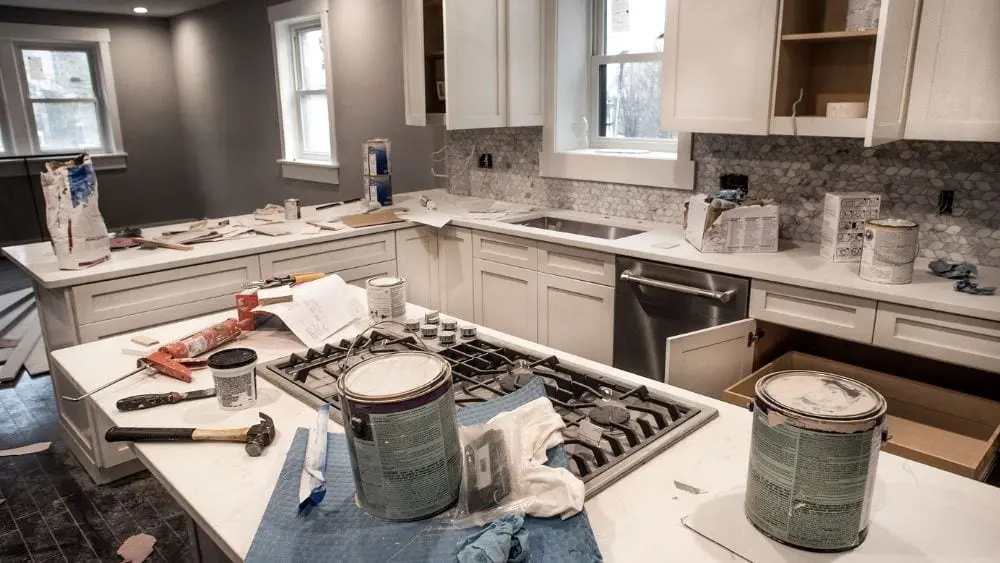
Appearances can be deceiving.
A resale home that’s been remodeled might look like a newly built home, but before you choose between a flip and genuine new construction, you should take a hard look what you’re getting and what you’re not.
The biggest issues with flipped homes involve warranties, repairs and the life expectancy of the home’s structural components, appliances and other improvements.
‘Warm Fuzzies’ for Warranty
A newly built home usually comes with a builder’s warranty. What the warranty covers and for how long varies from one builder to other, but if you hire a reputable builder, you’ll almost certainly get some protection from major problems with your new home for at least a year or two after it’s built.
A remodeled home may be covered by a warranty for improvements if you own the home and hire the contractor yourself. If you buy a flipped home, you may never know who did the work and you might not receive any guarantees for parts, labor or workmanship.
“If (the listing) says the house is ‘newly remodeled,’ you’re buying whatever they did. You can’t see behind the walls. You won’t have that warm fuzzy feeling that whoever did the work did it right,” says John Judd, Sr., co-founder of Judd Builders in Asheville, N.C.
Buyers can request documentation of work done in a remodeled home, says Ted Stevens, designated broker/owner at Paladin Realty in SanTan Valley, Ariz. Ask for copies of warranties and information about the materials that were used. A home service contract for at least one year is recommended.
The seller may or may not give you the information.
Remodeled Doesn’t Mean New
A new construction home typically comes with brand-new appliances covered by manufacturers’ warranties. A flipped house often has older appliances that have aged out of those warranties and may not be covered by a service contract.
Sooner or later, appliances break or wear out. If they’re not covered, you’ll have to pay out of pocket to repair or replace them. And if they are covered, you may still have to pay fees for repairs or building code upgrade costs for replacements.
Repairs can be necessary sooner than you’d expect in a remodeled home, says Michael Cuesta, president of Cuesta Construction, a builder in Miami.
Cuesta says every component of a home has a useful life expectancy and when you buy an older home, “You’re buying into the later part of that life” for components that haven’t been updated.
“You may encounter (problems) sooner in that home than you would in a new home,” Cuesta says.
A case in point is the home’s main sewer or waste disposal pipe. Newer homes use PVC pipes that don’t corrode the way older cast iron pipes do.
A remodeled home may have an updated kitchen and bathrooms with the original cast iron sewer pipe buried beneath the foundation and landscaping.
Cuesta says it’s “very costly to remove slabs and reinstall sewer systems.”
With a new-construction home, everything, including the sewer main, is new.
Another example is new carpeting that’s installed over old padding.
Matt Buttner, a house flipper and real estate broker at My Florida Home Buyers in Orlando, Fla., says, many investors, “Use the cheapest materials possible during the rehab to increase their profit margin. Buyers need to be aware and watch out for shoddy installation.”
Money isn’t the only issue. Time is a factor, too, says Nathan Outlaw, CEO of Onvico, a Georgia-based construction company that builds in the southeastern U.S.
“An older home can feel like a second job that you have to pay for the privilege of working at. A new home won’t have a constant list of things breaking and repairs that you can never stay ahead of,” Outlaw says.
Design Choice and Flexibility
Both new and remodeled homes can be structurally changed and redecorated, but there’s an important difference: A newly built home can be customized or personalized during the construction process. A remodeled home starts with an existing structure and design that can be costly to alter.
“If you buy a home that has been flipped, the owner has put in new flooring and paint. To do it to your taste, you would have to tear it all out,” says Carola Cherief, vice president of sales and marketing at Trumark Homes, a builder in Newport Beach, Calif.
If you sign a contract to purchase a newly built home before it’s constructed, you’ll be able to choose at least some of the finishes and fixtures that you want.
The bottom line is that a remodeled home can be a good buy at face value, but will always be riskier and contain more unknowns than a newly built home.

Marcie Geffner is an award-winning freelance reporter, writer and editor in Ventura, California. In the last decade, she has penned more than 1,000 published stories about residential and commercial real estate, banking, credit cards, computer security, health insurance and small business, among other subjects. Editors describe her as “detail-driven,” “conscientious,” “smart” and “incredibly versatile.” Her award-winning reporting has been lauded as “rock solid,” “spot-on relevant,” “informative,” “engaging,” “interesting” and “nuanced.” Her stories have been cited in seven published nonfiction books and two U.S. Congressional hearings.
Prior to her freelance career, Geffner was senior editor of California Real Estate magazine. Later, she became managing editor of Inman.com, an independent real estate news website. She also has prior employment experience in technical writing, corporate communications and employee communications. She received a bachelor’s degree in English with high honors from UCLA and master’s degree in business administration (MBA) from Pepperdine University in Malibu, California. She enjoys reading, home improvement projects and watching seagulls at the beach.
 Porches are the New Decks
Porches are the New Decks